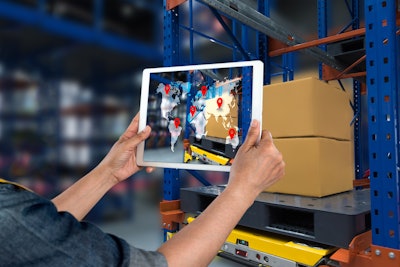
While most businesses understand that they must adapt their processes to more digital-friendly means, around 75% to 80% of digital transformations fall short of their objectives and end up failing. The difference between success and failure is the type of digital change model you deploy: is it temporary or sustainable?
A common strategy for digital transformation follows a technology-focused solution. The problem is that if you just focus on the technological solution, that doesn’t factor in the most critical aspects of your organization: the processes and the behaviors of your people. It’s people who have to change in order for the technological solution to be successful. That’s why Proudfoot regards technology only focused strategies as a temporary digital change model.
At the other end of the spectrum is the sustainable digital change model. Whereas the temporary solution picks out the technology first and tries to shoehorn it into the organization, the sustainable model steps back and takes a holistic view of everything.
“The sustainable digital change model starts with the end in mind and considers your processes and your people first,” Lorena Schoenfeld, Chief Operating Officer, Proudfoot says. “It ensures that the investment in technology is the correct one.”
So rather than beginning your transformation journey by choosing the technology solution, the better response is to investigate the business’s needs and then invest in the most suitable solution.
Ready to make a success of your digital transformation? Here are seven must-dos for every business.
1. Link digital transformation to business strategy
There needs to be a clear link between the overall company strategy and the digital transformation journey. Schoenfeld says that often these are not sufficiently conjoined. So, when there is no strategic linkage between the two, the risk is that your digital transformation will deviate from your company strategy from the very beginning, ultimately meaning it’s doomed to fail from the outset.
“You need to ask what you really want to achieve from your digitalization efforts and your transformation journey.”
2. Ensure your business case is clear
There must be an operational benefits case to prioritize your digital initiatives. You want to be focused on value, which means your digital transformation should be pegged to a business case.
“In some cases, the business case is vague, and it’s not tracked. We have seen this a lot, actually,” Schoenfeld says. When you fail to track value, you are unable to assess what impact the business case is having on the most important stakeholders, which means you can’t prioritize the most critical steps in your digital transformation.
Instead, you’ll need to assess the business case through a ‘lens of impact’ – that is, the impact on your customers, on safety, on employee skills, productivity, and the total cost of your digital transformation. Only then can you prioritize how the journey will roll out.
3. Beware of poor processes
There’s a right way and a wrong way to digitalize your business processes. The wrong way is to simply digitalize it as is, which means the failings of the past will carry over after your digital transformation is complete, potentially creating a snowball effect of even worse outcomes. Instead, you want to improve the process before digitalization begins, and this can only be achieved through collaboration and feedback.
“Digitalization typically fails when poor processes are digitized or interfaces are not well understood,” Schoenfeld says. “Therefore, the impact could be a lot bigger later.”
There are a few different ways to give a voice to your people to make your processes better. Enterprise crowdsourcing, also referred to as ‘mass collaboration’, involves getting your internal teams with common skills or interests to work together to innovate, report, predict and engage with these processes.
Aerial mapping takes a ‘helicopter view’ of the whole business, warts and all, to see how certain processes are functioning, where there is value, and where there are fundamental improvements that need to be made.
Whatever you decide, ensure you encourage collaboration and get total buy-in so that this solution is the right one for your business.
4. Acquire the right resources
When it comes to preparing for your digital transformation, you need to assign the right people to the right jobs. Of course, your leadership team is key. However, you also must bring in your operational people.
“You want what we call an interdisciplinary approach, and you want to involve change agents,” Schoenfeld says. “You want to create process owners as the right people to help you create the solutions and then implement them.”
By using this as an opportunity to locate and assign ‘champions of change’, you can generate much greater buy-in for the digitalization process while galvanizing your team to be more engaged throughout the entire journey.
5. Choose your digitalization projects selectively
It’s easy enough for large corporates to throw endless money at digital transformations to see what sticks, but ultimately a smarter, more efficient journey involves selective digitalization.
“You want to be selective enough for your organization,” Schoenfeld says. “You want to select what is good for – and right for – your organization as opposed to what you think is going to improve the business.” As mentioned in point three above, that’s where enterprise crowdsourcing and aerial mapping come into play.
What ends up being ‘good’ and ‘right’ for your organization may not be immediately clear to all parties. That’s why it’s essential that your digital transformation leaders continually refer back to the business strategy. When you align your decisions with strategy, there is always a clear path forward – rather than simply going with the social flow of new technologies and hoping they integrate easily with your organization.
6. Underutilized systems
Sometimes tools and systems are implemented but people don’t know how to leverage their strengths. Systems may be deployed, but without coaching, they become inefficient and may even slow down your daily operations.
“Make sure that there are procedures in place for any new systems and updated processes,” Schoenfeld says. “Be there on the floor coaching people on the utilization of the systems and training them regularly.”
Your organization may also have excessive bolt-on technologies that can decelerate your digital transformation journey. If your people are siloed and they don’t know what technologies are available in the organization or they don’t know the extent of the use of certain technologies, then that creates roadblocks in your business and will require continual training to get them across the most valuable digital tools.
7. Corporate digital awareness
For a digital transformation to succeed, your people need to understand how future technology solutions and innovations will help achieve corporate goals. According to Schoenfeld, that needs to start with leadership alignment.
“A common mistake is that you have too much data – a lot of organizations over-capture the data and end up with too many reports that are too complex to understand,” she says. “As opposed to that, you want to drive behaviors through data.”
What to do before selecting digital technology
During our Digitize Panel, Angus Maclean, EVP at Proudfoot, discussed why creating a Target Operating Model (TOM) is such a critical component in digital transformations. Having created those digital strategies and coordinated rollouts for clients, Maclean says there are a few key learnings that should feed into that operating model before selecting a technology:
Executive alignment: “Executive alignment is key in terms of what the future Target Operating Model should be. Once everybody has agreed on that and understands it, there must be alignment across the whole company. That makes it easier to digitize.”
The value of digital cases: “It’s really about having useful digital cases, rather than just use cases. Recently, a client had a large kiln asset, and they were using digital tools to get more efficiency and output. But when we did the maturity diagnostic, the challenge was really about sales – they needed more. So, we suggest that they refocus their digital efforts on customer acquisition and customer user experience to increase sales first. It’s really about knowing where you will get maximum value.”
Get your roadmap right: “Most of the building-materials companies have digital strategies and roadmaps for five to seven years ahead. So, someone may decide to invest millions into global ERP, SAP implementations, but that’s a big corporate decision. So, what happens when you find out that every plant has a different way of working? If they don’t have a Target Operating Model, it’s very difficult to implement some of these large-scale systems across each site, and perhaps millions are being spent on smaller sites that just don’t have the capability to do it.”
In conclusion, successful organizations need to think through business use cases and then align their front-, middle- and back-end IT infrastructure to meet these needs. Else, there is a real danger that the IT changes do not align with what the business needs – and most importantly what the customer needs. It’s a good idea to start by figuring out your operating model of how to best serve your customers, as well as the executive alignment of what is important for the business – then come the use cases.
















